What is a Buttercross
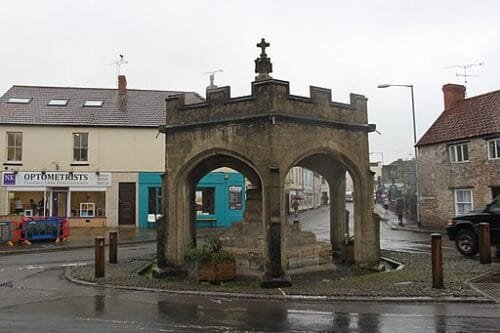
Now that I’ve finished posting The Buttercross Dragon, one last question remains to address: What exactly is a buttercross in the first place?
Well, I am glad you asked.
A buttercross is a peculiar structure, dating from medieval times, still found in some British market towns (which I hope to talk about next month), used to indicate where markets would be held.
Back in the 1200s, markets were held on Sundays, in the local churchyard, a generally convenient place for farmers and other producers to gather to find consumers and sell their goods. Gradually, markets moved from Sunday to the weekdays and shifted from the church yard to designated market places. People still had to find the markets though, and that is where the buttercrosses and market crosses came in.
Market crosses and buttercrosses were erected to identify where the local markets would be held—rather like the billboards used today to mark the location of the local flea market that might only be held on particular days of the week or month. Since the markets were no longer held in church yards, though, the cross was used to secure blessings on the businesses and products in the market.
Although the design of these structures would vary from market town to market town, they appeared to take two basic forms: the maret cross and the buttercross. The market cross seems to be a stone pillar topped with a cross, often on a raised dais with steps. The market would be laid out on the steps around the market cross.

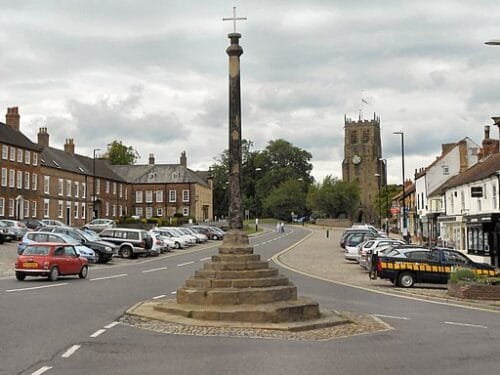
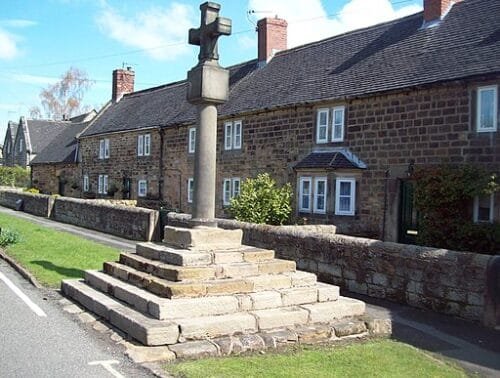
A buttercross seems to have me a somewhat more substantial structure with a roof of some sort surrounding the market cross. Sellers would set up under the shelter offered by the buttercross. In some cases, clocktowers and even bells might be added to the buttercross resulting the much more impressive structures.


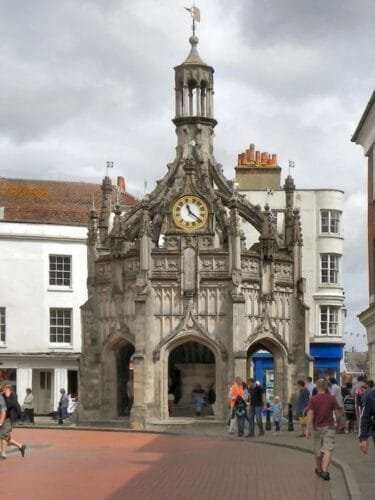


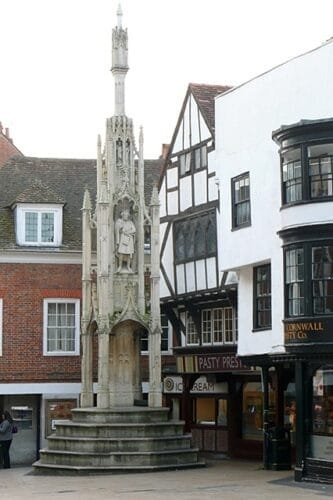
Some buttercrosses, like the one in Chedder that provides the setting in Buttercross Dragon, remain today. They are mainly found highly agricultural areas.
For more about buttercrosses check out What is a Buttercross?

Lovely and interesting structures! Thanks for the history lesson!
Both fascinating and delightful! It would be truly wonderful if some were put back to use as locations for farmers’ markets today. Many of the “old ways” lasted as long as they did for very good reasons, and were abandoned in the last century for paltry and short-sighted reasons. What wonderful old structures.
What a wonderful piece of information! It is interesting to find out different things that used to be and that leave for us such attractive structures. Thanks!
Pingback:What was a market town? - Random Bits of Fascination
The top left picture in the block of 6 is the Market Cross in the town of Beverley where my husband grew up! It’s at the Saturday Market, and there’s a Wednesday Market at the other end of town.